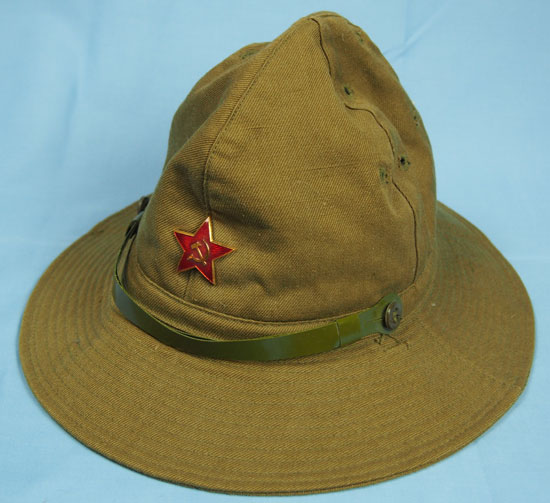
An early 1980s Soviet Afghanka cap of the type used during the summer months in the Soviet Union and by Soviet forces in Afghanistan (Collection of the Author)
While Imperial Russia and later the Soviet Union controlled vast territory, in each case it was truly an empire without far off colonies – apart from some brief adventures during the Imperial era and the Soviet’s proxy wars of course. However, the Soviets did utilize a number of summer uniforms including light weight khaki colored tunics and other clothing. Yet it wasn’t until the 1980s that a true form of “summer headgear” was developed.
This was the Afghanka hat – a type of boonie hat – that was utilized by the Red Army following the 1979 Invasion of the Soviet Union. The hat was developed with the other Afghanka uniforms and equipment, which was needed as the rugged countryside of the Central Asian nation was known for its extreme hot daytime temperatures in the summer and its equally bitter cold nights in the winter months. The boonie hat was developed to keep the rays of the sun off the wearer’s head and out of his eyes.
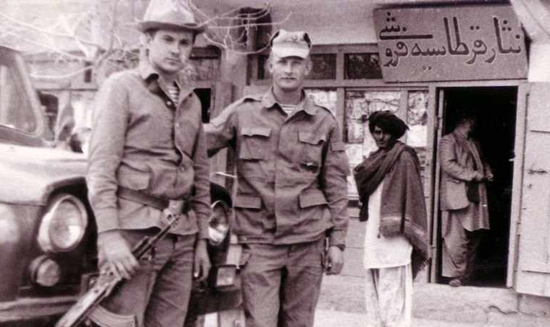
Two Soviet soldiers in Afghanistan in the early 1980s. The soldier on the left is wearing the Afghanka.
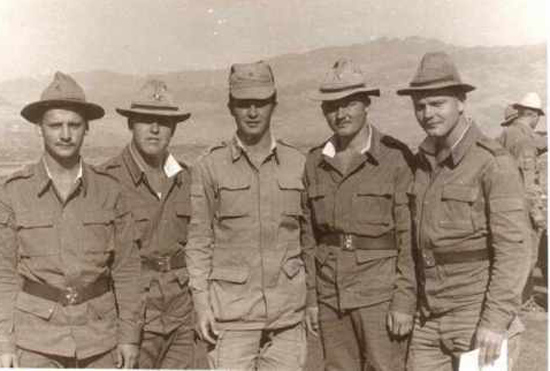
A group of Soviet soldiers wearing the summer uniforms including the Afghanka
These were typical Soviet construction – meaning basic and barebones. The cap was made of a heavy cotton cloth and featured a set of ventilation holes. It had a thin leather headband as well as a plastic chinstrap that was rarely used but absolutely had the Soviet Communist star on the front!
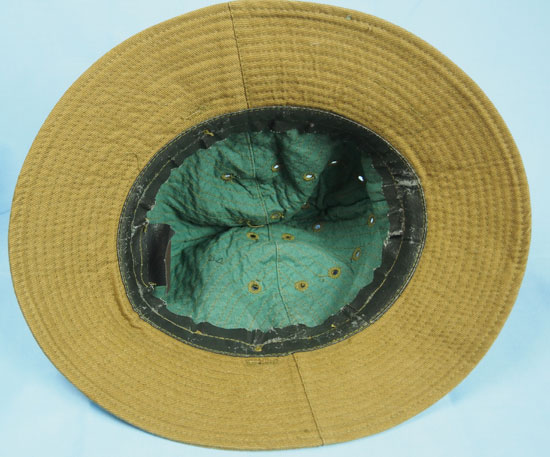
The interior shows the simple construction of the Afghanka cap (Author’s collection)
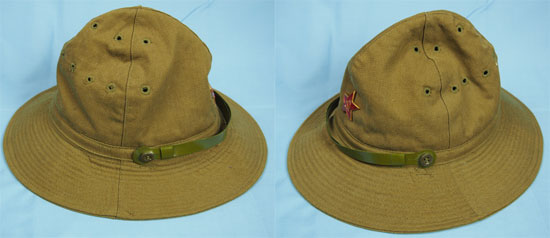
Side views of the Afghanka cap show the plastic chinstrap and vents holes. Examples were made with both cloth and metal grommets for the vents (Collection of the Author)
These hats were also supplied to pro-Soviet governments around the world including those of Angola, Mozambique, Grenada and Nicaragua. The versions deemed for export often lack the Soviet stamps, but it does appear that in Afghanistan that many were issued that didn’t have stamps.
The Soviet invasion of Afghanistan of course became a quagmire for the communist nation and the Soviets eventually pulled out. The traditional Afghanka was seen in many ways as being symbolic of the Soviet defeat in Afghanistan and it was replaced by a similar looking cap – that has largely been dubbed the “Panama Cap.” It had a flatter top than the Afghanka, and was apparently based on the boonie hats used by NATO forces.
Unlike the earlier pattern this version features snaps or press-studs that allowed it be buttoned up on the side – much like an Australian slouch or bush hat. However, shoddy manufacturing in the Soviet Union meant that the snaps often failed to hold!
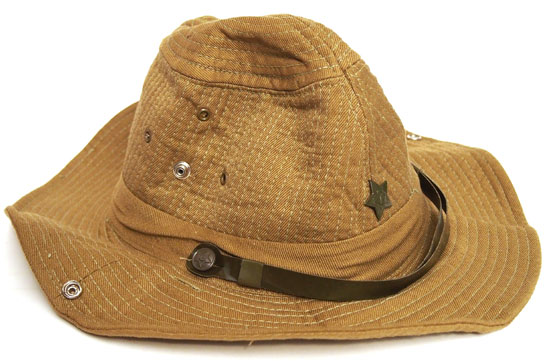
The so-called “Panama” cap was introduced to replace the Afghanka and was used in the final years of the Soviet Union. It was not reportedly liked by the post-Soviet Russian forces and thus taken out of service. It features snaps that don’t actually “snap” and the red star has been replaced with a subdued plastic star – further proof of how quality in the Soviet Union at its end had fallen. (Author’s collection)
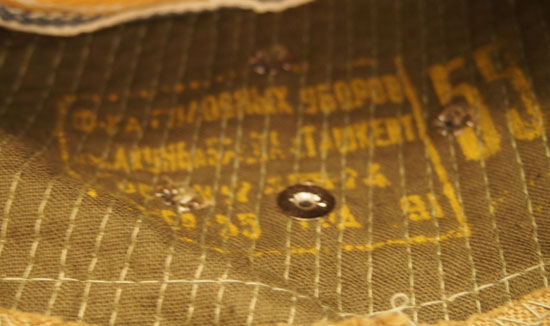
The Soviet stamps inside the “Panama” cap show that it was produced in 1991 – the very end of the line for the Soviet Union!
The two hats are often confused with one another, but it does appear that in the final days of the Soviet Union it was possible to see the two versions used side-by-side. However, it should be noted that the latter version — the so-called “Panama” style — was not used in Afghanistan.
In addition collectors should be wary as reproductions of both pattern hats are actually being made despite the fact that originals aren’t that hard to come by. The construction is often one way to tell, and ironically the reproductions are often of better quality than the originals!

Dear Peter, I do own your book on Military Sun Helmets of the World and I read most of your articles on this website, I admire and respect your knowledge and opinions, but allow me to disagree a Little bit on the subject of soviet hot climate headgear and to add some pieces of information. While it is true that this type of summer hat became widely known after the Invasión of Afghanistan in 1979, I am afraid the hat had been regulation issue to Soviet Army units in the Southern part of the USSR form many decades. It was certainly not developed for Afghanistan in 1979 or later, even if, since that war it has been wrongly known as “Panama” hat and “Afghanka”. The conflicto brought about a much needed modernisation of Soviet Uniforms, which dispensed with high boots and 1940’s looks and adopted more practical garments, with many pockets, not unlike the uniforms of some Warsaw pact allies (such as the Poles, Czechoslovaks or East Germans), but the history of hot climate gear goes back to around 1922, when the Red Army got regulations describing uniforms and headgear to be ussed in Azerbaidjan, the Caucasus and other parts of the Sourthern borders of the USSR. First cakme a summer versión of the Budienovka revolutionnary hat, with a wider brim around the head, and not so long afterward, a sun hat not unlike the one used in Afghanistan in the 80’s. The main external difference being the large, star shaped cloth piece sewn underneath the five pointed enamelled metal badge. Shape remained quite similar for many decades. Now, another interesting fact about the hat from the 1960’s , 70’s and 80’s, the famous one, is that it is crudely made, or sewn together (if compared with US Army Bonnie hats fro Vietnam era, for example) but is quite interestingly made as something between a 1920’s summer hat (not unlike what the Spanish Army issued for the wars in the Morrocan Rif mountains in the 1920’s) and a sun helmet: Yes, I say so, because, first of all it is made of a coarse and heavy clear olive Green cotton but lined inside with thinner mid-Green cotton. But most interestingly, closely looking at the ventilation eyelets one discovers that there is a layer of thin (about 3mm) white foamy insulating stuff, between the outer cotton and the green one on the inside, something that appears like Polyethilene foam roll. This insulating layer also gives some rigidy to the Crown of the hat (which is quite flexible nevertheless). Now, I have trie the hat on hikes in te mountains around Madrid (Spain) in summer time, at around 40 degrees Celsius, and I do not reccomend it… The light cotton US Bonnie hats are way better… The plastic (imitation leather) sweatband of the Soviet hat is also unconfortable. I will send you per eMail some pictures of the older Red Army summer hats.